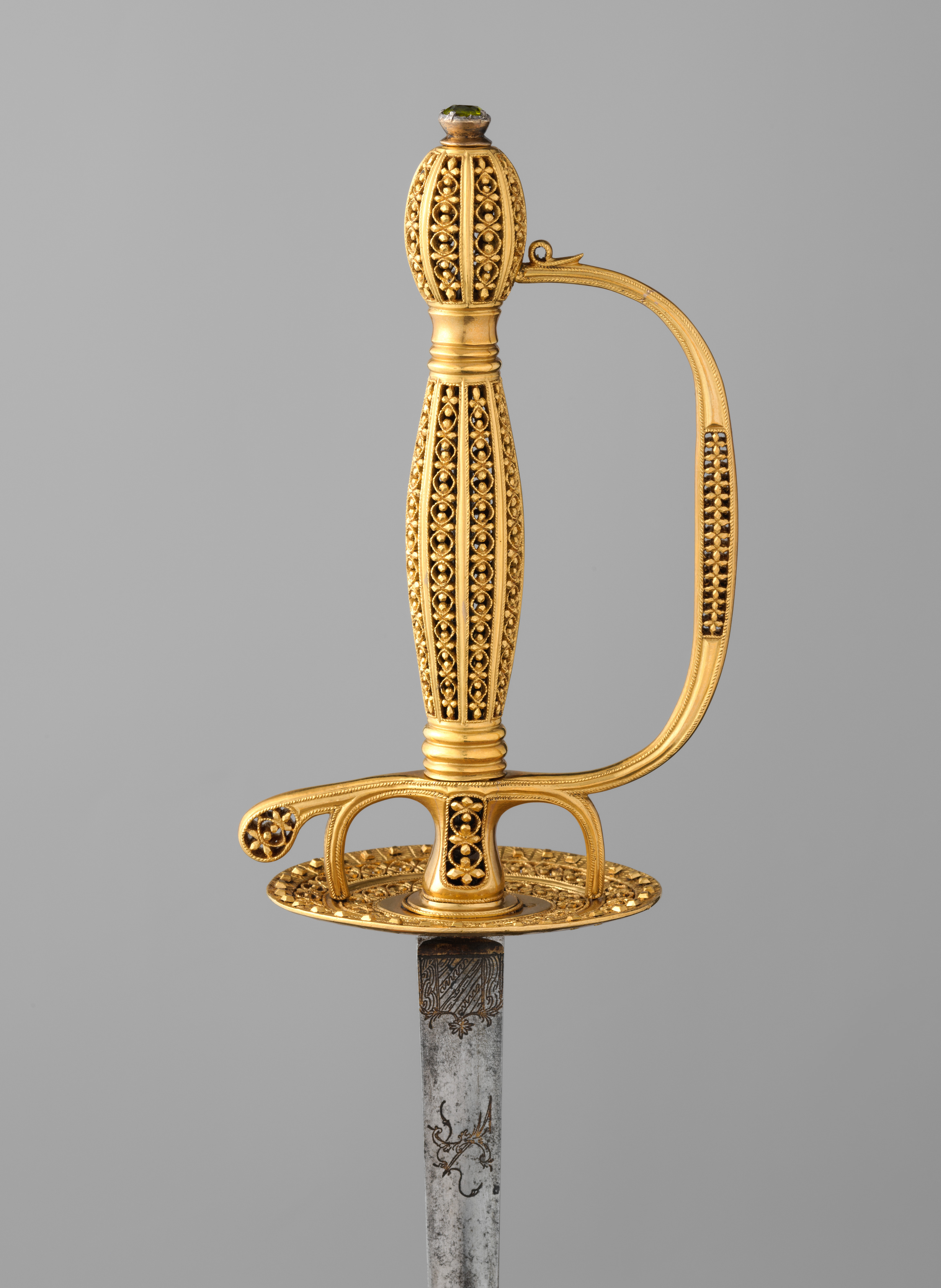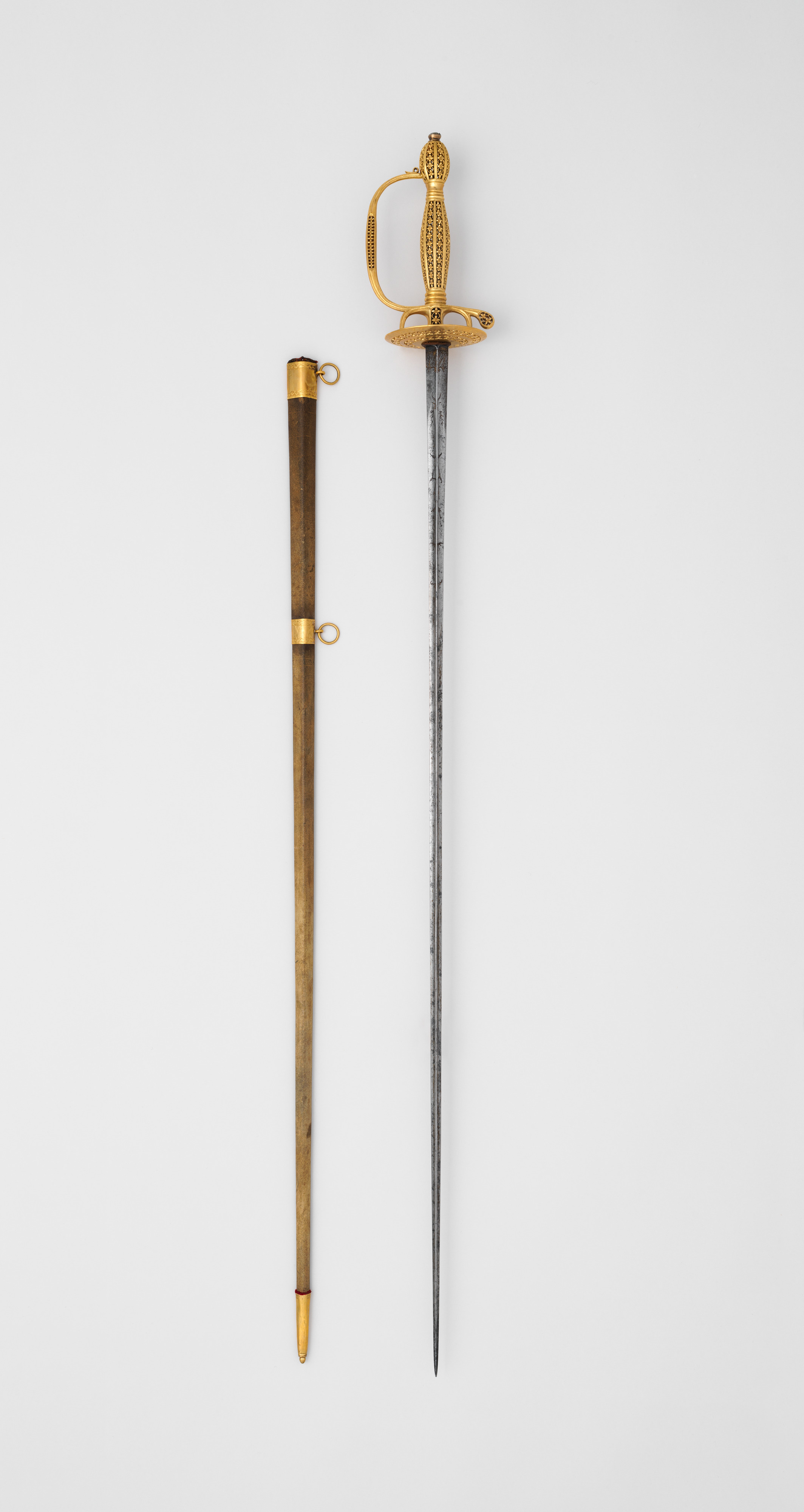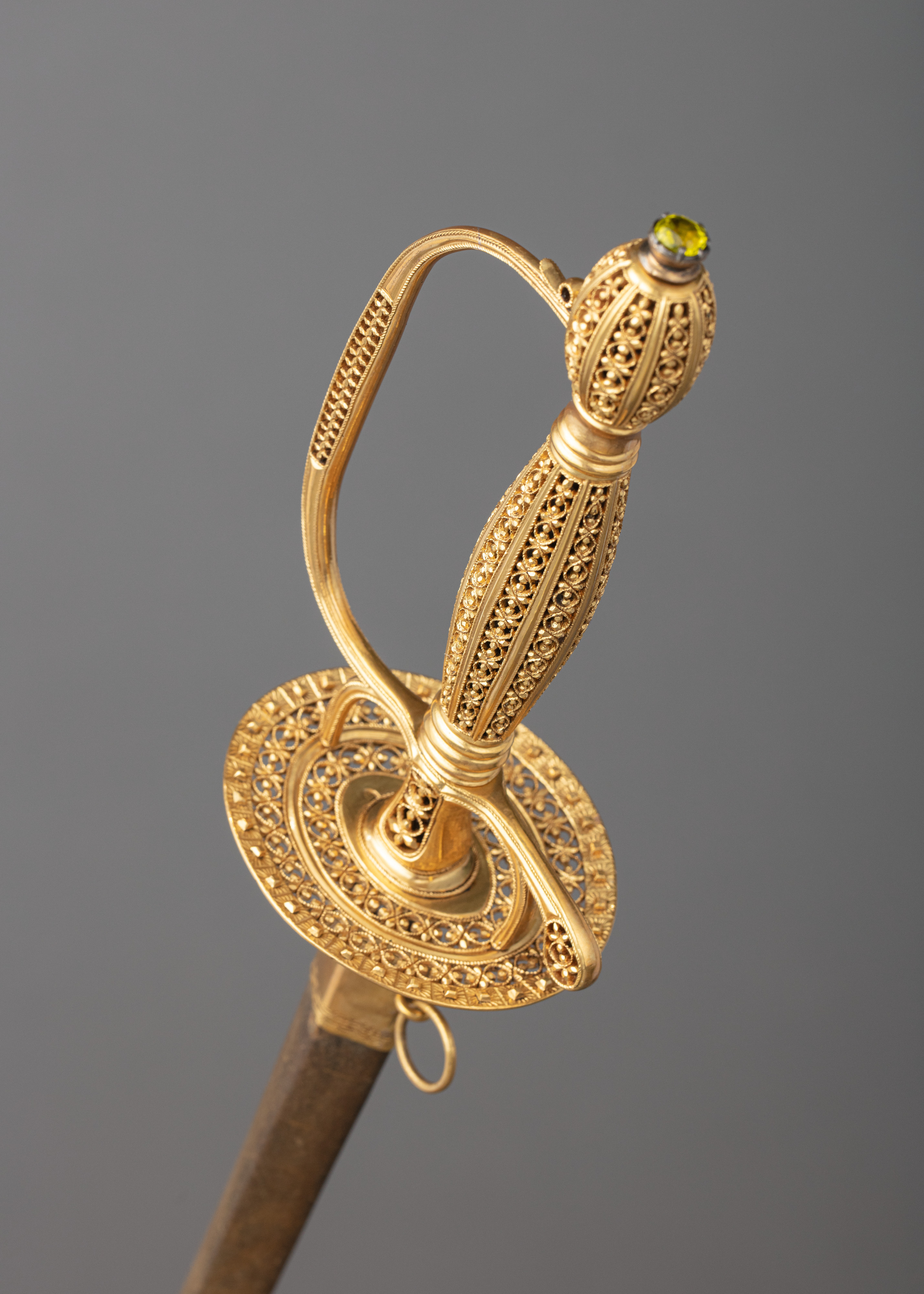Smallsword with Scabbard
hilt and scabbard, probably Spanish; blade, German, Solingen
Not on view
Smallswords were an essential element of male costume throughout Europe in the eighteenth century, the badge of a gentleman. The hilts of these sidearms, employing a variety of materials and embellished in the most current of fashions according to the wealth and whim of the owner, were appreciated as masculine jewelry. While smallsword design changed little over the century, certain aspects of a sword’s form and decoration can provide subtle evidence that points to its approximate date and place of manufacture and cultural context. In the absence of helpful marks or inscriptions, the identification of the exquisitely worked, gold-hilted smallsword recently acquired as a gift from The Robert M. Lee Foundation offered a test for the efficacy of stylistic analysis.
The simple and elegant form of the hilt, especially the tall ovoid pommel and oval shell guard, reflects the neoclassical taste that was popular in England and throughout most of Europe during the last third of the eighteenth century. Similarly, the elaborately pierced and faceted surfaces imitate cut-steel sword hilts and male fashion accessories like buttons and shoe buckles, as well as ladies’ jewelry, that were the specialty of English craftsmen and manufacturers like Matthew Boulton (1728–1809) in Birmingham in the same period. This hilt, on the other hand, is exceptionally rare in having been rendered in massive gold rather than steel or silver, and in the presence of a pale green gemstone (possibly prasiolite) set into the button surmounting the pommel. Few gold-hilted swords survive today, presumably because they were melted down for the value of their metal once they ceased to be fashionable. An illegible mark stuck on the shell is unlike any used in England and France, and thus raises the question as to where in Europe this precious hilt was made.
While certain features of the hilt help us to identify the approximate period of manufacture, as suggested above, others provide hints as to its place of origin. The tall, almost straight arms-of-the-hilt (referring to the two branches, one to either side of the center, that bridge the gap between the upper guard and shell), which accommodated the fencer’s index finger to provided a better grip and control of the weapon, are particularly diagnostic of smallswords originating in southern Europe, principally in Spain, but also in Portugal and Spanish-dominated Naples, where this feature is still found on civilian and military smallswords in the late 18th century, long after the arms had diminished and become vestigial on swords made in the north. Elaborately decorated Spanish smallwords for civilian wear are rare, but Spanish examples of military type, somewhat simpler and more robust, are better documented and exhibit the same features of elongated pommel, tall arms-of-the-hilt, and oval shell. Two smallswords with hilts of gilt brass of identical form, both captured from Spanish sea captains in the 1780s or 90s and now in the National Maritime Museum, Greenwich, UK, tend to confirm the likely Spanish origin of this sword.
The sword is mounted with a blade typical for smallswords of the period, of hollow triangular section tapering to a needle-sharp point, the polished surfaces retaining traces of etched and gilt ornament, and accompanied by a scabbard of wood, covered with white vellum and fitted with three simple gold mounts of different workmanship from the hilt, the upper two fitted with loose rings for attaching the sword-belt, which may be a later replacement of the original. Despite the cost and care that went into the fabrication of this sword, it bears no personal arms, initials, or emblems that might help us to the identity its original fashion-conscious owner.
This image cannot be enlarged, viewed at full screen, or downloaded.
This artwork is meant to be viewed from right to left. Scroll left to view more.





